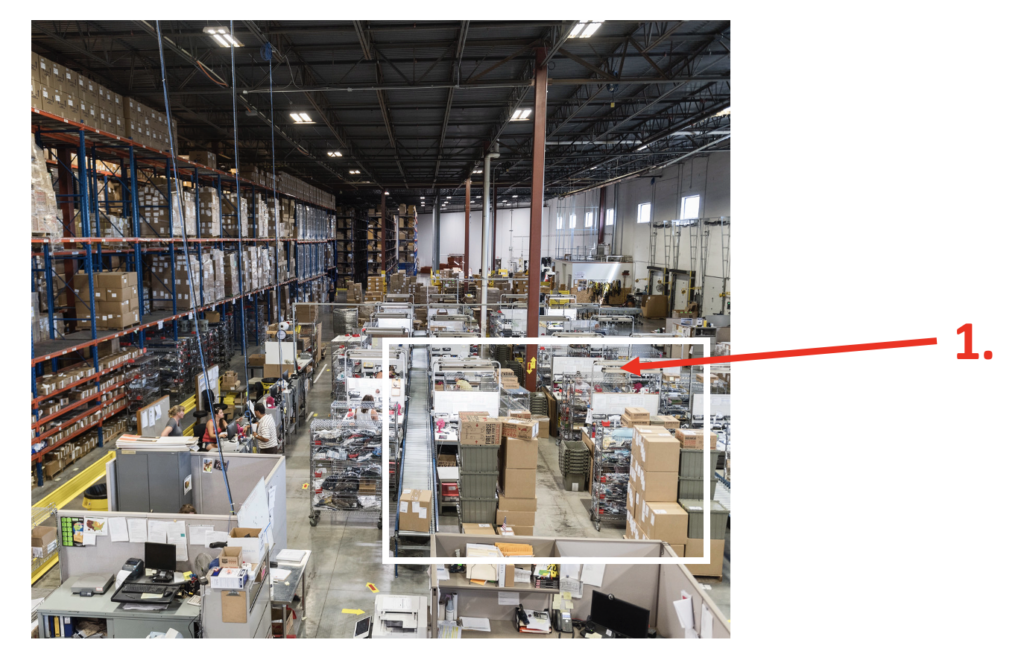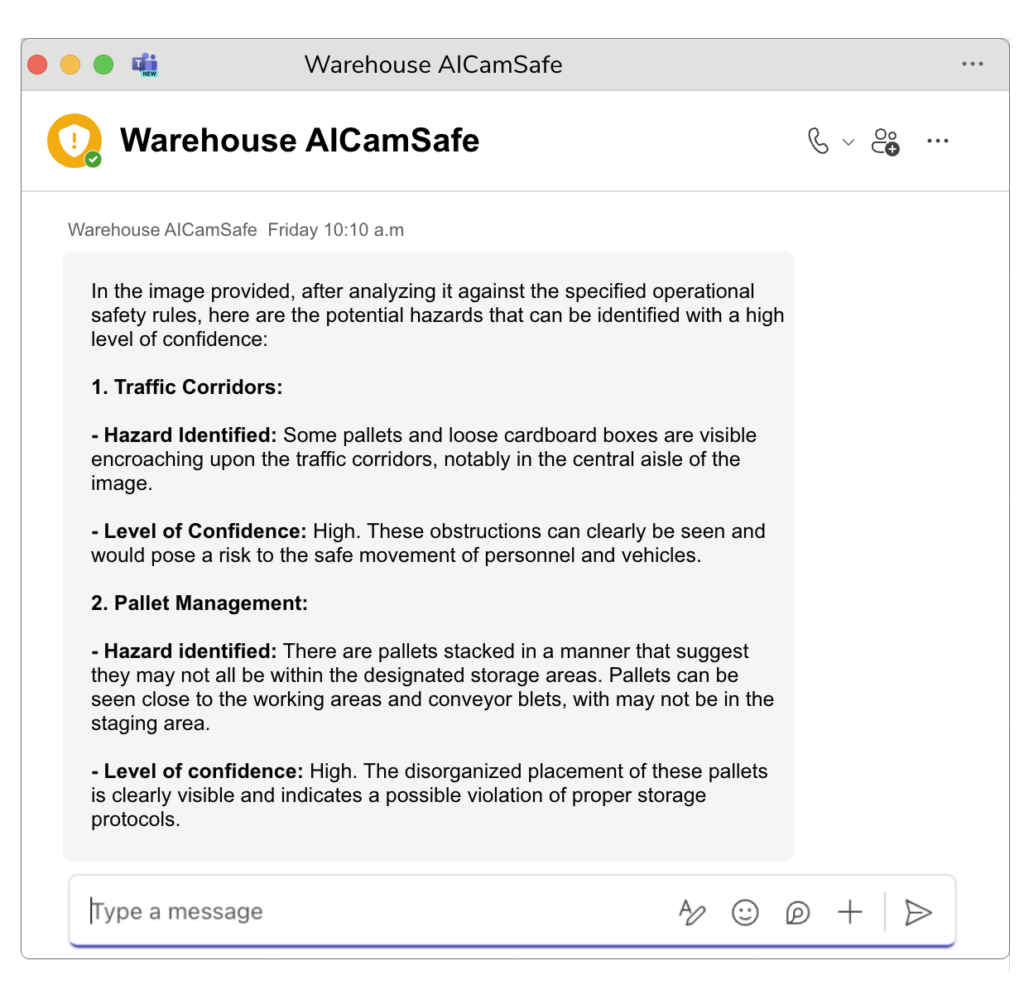In 2024, artificial intelligence (AI) has become a must-have for companies looking to innovate, thanks in large part to the mass adoption of generative AI, capable of creating original content ranging from text to images to entirely new concepts. We’re not the first to say it: this technology opens up the prospect of an explosion in productivity for companies in every industry.
Some fairly simple use cases for generative AI are now well known and documented on the Internet: chat engines, text and image generation, and so on.
But in concrete terms, how can tools like ChatGPT, Copilot or Gemini help your employees become more productive? How can your company improve its processes?
In short, what are the use cases that will really help you improve productivity, whether you operate a factory, a grocery store, a distribution center or a consumer goods company?
This guide aims to provide you with potential applications of generative AI in your industry. Whether you are responsible for corporate strategy, innovation management, or daily operations, this guide offers examples of how you can integrate generative AI into your initiatives, maximizing its potential to create added value.
Here are some advanced examples of generative AI solutions that are currently being used by companies.
Generative AI use case
1. Task list generation from photos
Improving task efficiency in supermarkets with image recognition
Imagine you’re a grocery store manager. You have to manage a mountain of daily tasks that your employees have to perform. You’re also facing a labor shortage. So prioritizing tasks and assigning them efficiently is crucial to keeping your business running smoothly. But fortunately, you’re using AI: your employees are automatically given the right tasks to do at the right time.
From a simple photo of a refrigerator or a counter, generative AI can identify all the tasks a clerk should perform, taking into account the time of day. Based on the information from the photo, we automatically generated a list of tasks for the employees.
And not just any tasks. The beauty of generative AI is that it is based on your process guides and employee guidelines to suggest the right tasks to perform. Imagine a platform residing on a mobile device that, after a quick scan of the counters, suggests tasks that the employee should perform:
- Replenish missing products.
- Clean and organize the refrigerator for better product visibility.
- Highlight promotions or products to be featured.
- Take inventory of stock to anticipate orders to be placed.
Here’s what the application might look like:
Other task generation applications
This technological revolution doesn’t just apply to the retail industry: here are some other possible applications in several industries.
Optimizing space and inventory : Identify missing items, generate replenishment lists, detect incorrectly stocked products and generate instructions for reorganizing shelves.
Building maintenance and management: Detect building anomalies such as leaks and cracks, enabling preventive planning of repairs and the efficiency of maintenance teams.
Ensuring compliance with sanitary standards: Identify cleaning and maintenance needs, to free up staff for food preparation and quality control.
Managing public and urban spaces: Efficiently manage resources by targeting interventions in public spaces, facilitating maintenance and cleaning.
2. Health and safety analysis tool
Warehouse risk reduction using AI for hazard detection
Warehouses are areas where health and safety risks can be high due to the presence of heavy machinery, chemicals and handling activities. Generative AI offers great solutions for improving worker safety and ensuring regulatory compliance by monitoring and detecting problems.


Using images from surveillance cameras installed in the warehouse, the AI system can :
- Analyze images or videos and detect anomalies or dangerous behavior.
- Identify if an aisle is obstructed by pallets or boxes, if an employee is not wearing a hard hat or protective gloves, or if there is a liquid spill that could cause injury.
- Identify whether your inventory is stored safely, for example, by providing early warning that a stack of pallets is moving and will eventually collapse.
As well as generating alerts, such a system can generate regular reports on detected incidents, enabling managers to identify trends and areas requiring improvement. These reports can also be used for safety audits and to demonstrate compliance with current regulations.
Risk analysis applications in other industries
Monitoring the use of protective equipment: Ensure that employees are wearing the appropriate PPE, such as hard hats, goggles and gloves.
Fall detection : Quickly identify worker falls on construction sites.
Loading dock supervision: Ensure that safety protocols are followed when loading and unloading goods.
Crowd management: Monitor waiting rooms to avoid overcrowding and panic situations.
3. Chatbots
Improved customer service with chatbots that respond to complex requests.
Qualification Québec is a skills recognition portal offering all the resources you need to work in Quebec. The organization has implemented a conversational agent powered by generative AI to enhance the experience and enable its users to converse naturally with the agent in order to find their equivalent occupation according to the National Occupational Classification (NOC).
Using generative AI, the chatbot analyzes the user’s responses and compares this information with the NOC database. It identifies possible equivalent professions and provides a list of potential matches. The chatbot delivers fast, accurate results and enables personalized, context-sensitive interactions, enhancing the user experience. The implementation of this tool enables users to obtain information at any time.
Conversational agent applications in industry
Shopping assistance: Help customers find products based on their preferences and purchase history, and recommend similar or complementary items to improve cross-selling.
Assist your customer support team: Help your agents find the right information in the multitude of documentation you work with. From user and maintenance manuals, through automated answers to the most frequently asked questions, to precise documentation on how they work.
Customer service: Answer questions about products, delivery times, and return policies, and automate the processing of customer requests for fast, efficient responses.
Financial advice: Offer basic advice on money management, investment options and personal financial planning, while maintaining a 360° view of the customer’s specific needs.
Employee onboarding: Provide information on the company, internal policies and benefits, and assist with initial training and integration of new team members.
4. Automated generation of metadata in ERP systems
Optimize product catalogs through metadata automation
You’re a large retailer or chain of stores with a vast inventory of products to display on your website or in a catalog. To ensure that all products are properly listed, a considerable amount of data must be entered manually. This process is not only time-consuming, but also requires large teams dedicated to entering and generating information in various systems. Not to mention new product arrivals that overload your team.
Often, this information includes duplicates or requires conversions between different systems. Sometimes, it’s a matter of analyzing product descriptions to categorize them correctly. This task is essential, whether in ERP (Enterprise Resource Planning) or other types of systems.
To improve the efficiency and accuracy of this process, generative AI can be used to automate the generation of metadata from product texts or images. This not only reduces the workload for teams, but also ensures greater consistency and accuracy of the information listed. Generative AI can analyze product descriptions, generate relevant metadata and automatically integrate it into the appropriate systems, facilitating the management and display of thousands of products.
Applications of metadata generation in industry
Technical documentation: Automatically create and update technical documentation for products and machines.
Medical data annotation: Generate metadata for medical records and X-ray images.
Generate web content: Create web content including SEO-optimized meta tags, such as keywords and descriptions.
Risk assessment: Provide risk metadata to support insurance and investment decision-making.
Automated Generation of Metadata: Solutions for SAP, Oracle, and Microsoft Dynamics Inventories -> Read full article
5. Metadata extraction
Optimization of quotation production from customer emails
The ability to respond quickly to customer requests for quotes is essential to remain competitive and meet consumer expectations. Manually processing each email containing requests is a time-consuming and error-prone task. Generative AI can automate and optimize this process.
AI starts by analyzing incoming e-mails to extract relevant information. This includes the specifications of the products or services requested, the quantities required, the desired lead times, and any other critical details. It identifies key terms, specific conditions and preferences mentioned in the e-mails.
Based on pre-established templates, the tool can automatically generate quotations. These quotations are structured to include all necessary elements such as unit prices, additional charges, payment terms, etc. Based on the extracted data, quotations can be customized to meet the specific needs of each customer.
Other metadata extraction applications
Ticket classification: Use metadata to classify and prioritize support tickets, and assign them to the right technicians.
Contract tracking: Extract metadata such as dates, parties involved, and conditions from e-mails, and generate reminders for important contract deadlines.
Invoice processing: Retreive information from invoices sent by e-mail (amount, date, supplier) and generate accounting entries or payment proposals.
Processing citizen requests: Information extraction from citizens’ e-mail to process public service requests and generate responses or appointment proposals.
6. Automated test generation
Validation of code quality
As a company that develops solutions for our customers, it’s crucial to equip ourselves with the best tools to guarantee the robustness and reliability of our deliverables. To this end, our teams have adopted generative AI to automate test generation. This approach not only increases our operational efficiency, but also reduces the costs associated with testing. What’s more, the use of AI improves test coverage while minimizing human error, and ensures high-quality end products.
Generative AI scans source code and feature specifications to understand feature logic and expectations. It uses natural language processing (NLP) models to extract requirements and convert them into test scenarios. This solution can analyze source code, feature specifications and bug histories to generate unit tests, integration tests and regression tests.
Other applications for test generation
Security and confidentiality of medical records: Create test cases to verify that patient data is protected and that the system complies with confidentiality regulations.
Risk scenarios: Simulate various risk scenarios to test underwriting and claims management algorithms.
Inventory management system performance: Create test cases to ensure that inventory management systems can handle large quantities of data in real time.
7. Text correction
Optimizing teaching by automating text correction
100% of French teachers admit to needing help with text corrections. Collège Sainte-Anne understands that the well-being of teachers is crucial to providing the best possible education for their students. Collège Sainte-Anne approached Moov AI to explore the feasibility of automating correction, with the aim of assisting teachers and benefiting students
Émilia, a tool powered by artificial intelligence, assists teachers in the correction of texts by identifying errors while basing itself on the students’ teaching program in order to monitor their learning.
AI can detect errors in text consistency, sentence syntax, punctuation, vocabulary, grammatical spelling and usage spelling, depending on the student’s level.

The use of artificial intelligence improves teachers’ quality of life by reducing the time spent on correction, freeing up more time for pedagogy with students, thus promoting better feedback and learning.
Automated Generation of Metadata: Solutions for SAP, Oracle, and Microsoft Dynamics Inventories -> Read full article
Other applications
Customer support and documentation: Write and correct technical documentation and responses to customers, improving customer satisfaction and product understanding.
Correction of legal documents: Check legal documents for conformity and detect errors in contracts and other legal texts.
News article correction: Use generative AI to correct articles before publication, improving editorial quality and content consistency.
Correction of ad copy: Correct ad copy before it goes to press, improving content quality and ensuring editorial consistency.
Medical and scientific documentation: Ensuring the accuracy of reports, research articles and other medical and scientific publications.
Beyond text correction
Generative AI has demonstrated its ability to perform text correction, but these examples also show its capacity to automate business processes. For example, it can create meeting summaries, translate texts from one language to another, or create presentations based on collected data.
By automating these processes and entrusting repetitive tasks to generative AI, employees can be freed up to concentrate on higher value-added activities. This also improves the accuracy of operations and consistency in task execution.
The importance of doing things right
Implementing such applications also requires rigorous internal policies to ensure responsible use. It is important for companies that data is processed by trusted technology partners with high ethical standards and data protection protocols to prevent misuse.
To guide companies in the responsible use of generative AI systems, the Canadian government has developed a voluntary code of practice. This code aims to enable developers, disseminators and operators of these systems to avoid harmful effects, build trust and prepare for a smooth transition to compliance with the future Artificial Intelligence and Data Act.
It’s also important for companies to equip themselves with governance structures that monitor AI use, ensure regulatory compliance and foster a culture of transparency. At the same time, it’s essential to train employees in AI best practice, so that they understand the ethical implications and are able to identify and resolve potential issues.
Proactive risk management is also a practice to be adopted, enabling potential incidents to be identified and preventive measures put in place to avoid them. This includes implementing contingency plans, assessing vulnerabilities and preparing for emergency scenarios.
Generative AI in business
Generative AI represents a major opportunity to rethink the way companies deliver value to their customers and increase the productivity of their teams. This technology, which 96% of organizations consider to be a major topic of discussion is gaining in popularity. It’s essential to take the time to identify the functions in your company that could benefit from this breakthrough.
We hope this guide has sparked your curiosity and stimulated your desire to explore the possibilities offered by generative AI in your field. By highlighting specific use cases for different functions and industries, we wanted to show the transformative potential of generative AI for organizations in all sectors.
While the adoption of generative AI raises questions and presents challenges, it is undeniably part of the future. Organizations need to start preparing now to stay competitive and take advantage of this technology. By taking proactive steps to integrate generative AI, you can not only improve your operational efficiency, but also provide better service to your customers.
Moov AI uses generative AI to create this blog.
Here’s how our marketing team is using generative AI to improve this blog. We used a combination of ChatGPT, Copilot and Gemini to generate examples of use cases in various industries, based on a real-life case developed by Moov AI. Parts of the text were generated, corrected and translated with the help of generative AI. The blog header image was also created using the following prompt: Artistic abstract generative AI guide book, in the style blobby 3D, blue gradient color in Midjourney. We then used Adobe Firefly, integrated via Photoshop beta, to adjust the image to the correct format.

Olivier is co-founder and VP of decision science at Moov AI. He is the editor of the international ISO standard that defines the quality of artificial intelligence systems, where he leads a team of 50 AI professionals from around the world. His cutting-edge AI and machine learning knowledge have led him to implement a data culture in various industries.